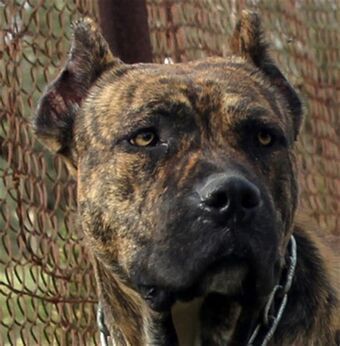
Of all the countries that had an impact on the culture of Puerto Rico, the one that most left an indelible mark on the Island was Spain. From its official language and musical genres to local culinary dishes, Spanish heritage is seen, heard, and tasted everywhere.
It can also be seen in the only dog breed native to the American territory, the Gran Mastín de Borínquen, or Puerto Rican Mastiff.
These were (and are) extremely loyal dogs that form strong bonds with their owners. There is a legend about “Becerillo,” a dog said to be owned by Ponce de León, but often in the company of Don Sancho de Arango, a companion of Ponce of Leon’s. During an attack by Island Caribs on plantations situated on the Loíza River, Don Sancho de Arango was captured, and may well have suffered the consequence of being snatched by people reputed to eat their war enemies had it not been for Becerillo. Though the Carib mounted a furious volley of poisoned arrows and many were killed, Don Sancho de Arango escaped because “Becerillo,” and “Leoncillo,” a dog sired by Becerillo, attacked the Indians with intense ferocity. The dog fought to the end, and though he normally wore a padded jacket, it isn’t known if he wore it that day. Both dogs died in the aftermath of the horrific battle, likely poisoned by the arrows.
This is a big dog, one that can weigh up to 150 pounds. Loyal to a fault, the Puerto Rican Mastiff needs a strong leader in its owner, and consequently is a poor choice for a first time owner. They are very protective and may become aggressive if they perceive a threat to themselves, their people, an in particular, children of whom they are said to be very fond.
Today the breed is considered rare, and while it isn’t recognized by any major kennel club, it was established as an internationally recognized rare breed by la Sociedad Cynológica Caribeña in 1979 in an effort to restore the dog to its place among the Caribbean dog fancy.
Image found on Pinterest and happily credited upon receipt of information
